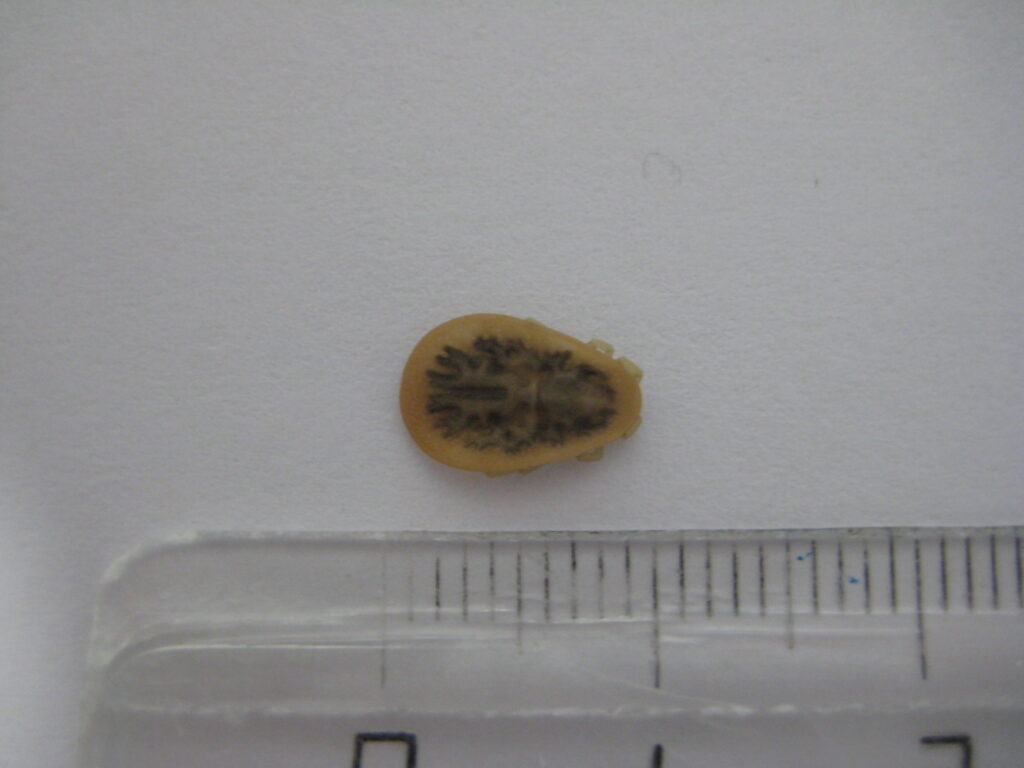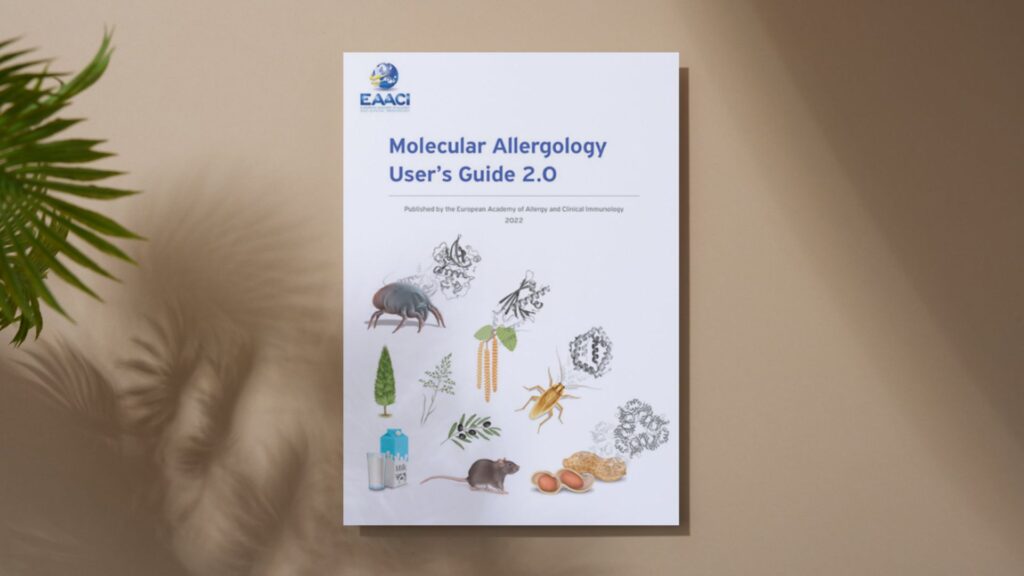BACK TO RESEARCH WITH IMPACT: FNR HIGHLIGHTS
As the FNR marks 25 years since its creation, we highlight 25 examples of FNR-supported research with impact. Over the last 20 years, Christiane Hilger and her research group have discovered more than 30 allergens, and analysed unexpected correlations between, for example, tick bites and meat allergy.
Allergic diseases are on the rise, representing the most common chronic inflammatory disease in Europe.
Main drivers are Westernized lifestyle and environmental changes. Allergies affect mostly children, adolescents and young adults, impacting on their quality of life and generating not only a high individual burden, but also substantial economic costs related to health care, absence from school and work.
“In a recent study carried out, we found that about 42% of the adult population in Luxembourg reported allergic symptoms, and these numbers are projected to increase to at least 50% in the coming years. Research on allergic diseases is important to reduce the disease burden by providing a better diagnosis and treatment, and to decrease the prevalence of allergic diseases in Luxembourg by implementing adequate prevention measures. ”Dr. Christiane Hilger (active in allergy research in Luxembourg since 1996) Leader, Molecular and Translational Allergology Group at the Luxembourg Institute of Health (LIH), together with co-leader Dr. Annette Kuehn.
Hilger & team investigate allergic diseases, with the goal to address unsolved medical needs in allergy prevention and diagnosis.
The research has two main strands: Firstly, the allergens, players in the sensitisation process as well as in triggering allergic symptoms; and secondly, biomarkers to identify early pathological immune reactions for better diagnosis and early treatment.


Luxembourg population-based study shows 42% have allergies, age group 25-34 most affected
The research of the Molecular and Translational Allergology Group at the Luxembourg Institute of Health (LIH) that Hilger leads together with Annette Kuehn also studies how allergies affect people in Luxembourg: In collaboration with the Department of Precision Health (LIH), they published a national population-based study where they found that 42.6% of adult participants had a physician-diagnosed allergy and an astonishing 44% tested positive for IgE antibodies, which is seen as a marker indicating allergic sensitisation.
“Importantly, the study showed that the youngest participants, meaning adults that were 25-34 years old, had the highest allergy burden and the highest need for medical care. This study is the first to provide data on the national level, and it shows that there is an urgent need for better allergy diagnosis and treatment in order to prevent worsening of symptoms and multi-organ involvement. Early diagnosis is an important pillar of allergic disease prevention strategies, but epidemiological data on allergic sensitization in children are currently lacking in Luxembourg.”
Read more about this research“When extrapolating existing data on costs generated by individuals not adequately treated for allergic diseases, this would amount to a sum of 61.6 million € per year of avoidable costs for Luxembourg. Our vision is to elaborate a National Allergy Plan together with different stakeholders in order tackle the allergy epidemic and install primary, secondary and tertiary prevention programs to improve the quality of life of the population and decrease the individual and societal burden of allergic diseases. ”Dr. Christiane Hilger

Advances in allergy research enabling new insights
Much has happened in the field of allergies in the last three decades, the most important development being the characterisation of allergenic molecules from many sources. This generated a vast field for fundamental research and many opportunities for improvement of patient in vitro diagnosis.
“The availability of well-defined allergen molecules, together with advances in molecular biology, biotechnology and health technology have substantially changed diagnosis and treatment of allergic diseases, allowing for a better endotyping of patients, resulting in a personalised care.”
“The second very important development was the formulation of the epithelial barrier hypothesis, ‘which proposes that the increase in epithelial barrier-damaging agents linked to industrialization, urbanization and modern life underlies the rise in allergic, autoimmune and other chronic conditions’ (C. Akdis; Nat Rev Immunol 2021). These new insights allow to design adequate prevention and treatment strategies for chronic inflammatory diseases, including allergy.”
Recent research has also found a link between immune-mediated diseases and climate change, due to the associated increase in environmental factors impacting the human immune system.
More than 30 new allergens characterised
Over the last 20 years, Dr. Hilger, together with the Co-Group Leader, Dr. Annette Kuehn and their team, have substantially contributed to gathering insights into allergies by identifying and producing new allergens from animal air-borne and food sources.
“We have characterised more than 30 new allergens, mostly recognized by the WHO/IUIS Allergen Nomenclature Sub-committee. Based on this knowledge and on a unique portfolio of allergens available in our group, we discovered new clinical cross-reactivity patterns that are now of interest in the clinical care of allergic patients. We investigated clinical cross-reactivity between respiratory allergy to cat and food allergy to mammalian meat, combined food allergy to fish and frog, or fish and chicken. Such clinical cross-reactivities may seem unexpected but on the molecular level, we could find allergen molecules that are highly similar between those animals. This allowed explaining why patients react to such different sources. ”Dr. Christiane Hilger

The team was able to validate those allergens in national and international clinical collaborations and many of them are now available for molecular IgE-diagnosis, which has helped improve allergy diagnosis of patients and personalised dietary advice.
Research highlight: Understanding reactions to pigeon tick bites
Molecular diagnosis in patient care is a key aspect of tackling allergies. In this regard, the team has made big strides: In collaboration with the University Hospital of Strasbourg, France, Hilger and team analysed sera collected from patients that experienced severe nocturnal anaphylactic reactions after a bite of the pigeon tick.
“We could isolate and characterise the allergen responsible for these reactions and provide a diagnostic tool that we used to elucidate cases of nocturnal anaphylaxis from 6 European countries. Our study emphasised that pigeon tick allergy needs to be taken into account in the differential diagnosis of severe nocturnal anaphylaxis during spring and summer when patients live in the immediate neighbourhood of pigeons.”
Read more: https://doi.org/10.1016/j.jaci.2004.11.052 | https://doi.org/10.1111/all.13344


Research highlight: Discovering people with fish allergy are able to add particular fish to diet
Fish is a highly valued nutritional food, but it is also among the most common foods that elicitate IgE-mediated food allergy. The general understanding used to be that people with a fish allergy have to avoid all types of fish, which of course restricts nutritional intake options. Kuehn, Hilger and team discovered that there is in fact a fish tolerable for these patients.
“Using our portfolio of purified fish allergens for in vitro diagnosis, and in collaboration with the Centre Hospitalier de Luxembourg (CHL), we showed that most patients were able to tolerate thornback ray, a cartilaginous fish.”
“In a subsequent large multicentre study involving 263 patients from 6 countries, we could confirm our findings, demonstrating that using multiplex IgE testing in fish-allergy diagnosis will drastically reduce the number of required food challenges and help identify tolerated fish for each patient, thereby avoiding unnecessary dietary restrictions.”
Read more about this researchResearch highlight: Luxembourg’s first food allergy trial
Important resource and time-saving progress has also been made in the area of peanut allergy. One of the most common food allergies, the number of especially children with this allergy is sharply rising. The “gold standard” in peanut allergy diagnosis is a food challenge: Patients are given increasing doses of peanut to establish their reactivity threshold and confirm the allergy. While effective, the test needs to be performed in the clinical setting, meaning a burden of safety, effort and resources.
“In collaboration with the paediatric clinic at the CHL, we were able to carry out the very first food allergy trial in Luxembourg. We described blood immune signature changes occurring during the peanut challenge and during acute food allergy symptoms.“
“These signatures reflect a real-time picture of dynamic processes of immune cell migration and activation and hold the potential to form the basis for investigating biomarkers that would be predictive for allergic symptoms in allergic patients, with the goal of reducing the burden of food allergen challenges.”
Read more about this research
Research highlight: Better understanding of why meat allergy takes hours for symptoms to manifest
Red meat allergy, in scientific terms referred to as the α-Gal syndrome (AGS), is a relatively new type of food allergy. It differs from any ‘classical’ food allergy in the sense that it is driven by IgE antibodies directed to a carbohydrate. After ingestion, symptoms do not appear immediately, but in most cases only after several hours, and they can be severe and life threatening. Meat allergy is the first known vector-borne allergic disease, and the sensitisation mechanism remains a puzzle. In the collaborative project IRGal, supported by an FNR CORE grant, Hilger & team tackled this mystery in relation to the source of α-Gal in ticks and in food, the sensitisation mechanism and the delayed allergic reaction upon ingestion of mammalian meat. The project involved a total of 5 partners and collaborators (Partners and collaborators: Technical University of Munich, Eberhard Karls University of Tuebingen, Centre Hospitalier Luxembourg, University of Hohenheim and Helmholtz-Zentrum Munich).
“Despite the fact that we and others have identified α-Gal carrying proteins in beef and pork kidney, both important sources of α-Gal, prevailing theories associate the delay of allergic reactions with α-Gal present on meat lipids. Lipids would take longer to digest than proteins and their bioavailability would coincide with the occurrence of symptoms after 2-6 hours.”
“Our data show that the carbohydrate α-Gal bound to proteins and to lipids can bind to patient IgE and activate effector cells, but that α-Gal is much more abundant on the analysed meat proteins than on meat lipids. Moreover, we could demonstrate that α-Gal carrier proteins are stable enough to withstand gastric digestion, resulting in an allergic response hours after the ingestion of meat.”
This characterisation of glycolipids and glycoproteins from mammalian food illustrates the vital role of molecule stability and abundance in the delayed response and severity of symptoms – findings which will have a direct and important impact on patient advice.
Read more about this research
Future challenges: What makes an allergen an allergen?
Even though researchers have been able to characterise many allergy sources, the question of what makes an allergen an allergen is still open. Food, animal dander or pollen all contain a variety of molecules, but only a few of them are recognized by IgE-antibodies and lead to allergic symptoms.
“We know for some allergens that their intrinsic properties such as enzymatic activity, or ligand binding, thermal and enzymatic stability, contribute to their allergenicity, but for the majority of allergens, this remains to be investigated. Currently we also do not understand why some individuals are more susceptible to develop an allergic disease and why some food allergies such as allergy to milk and egg, tend to resolve during childhood whereas others such as peanut and nut allergy do not. Investigating those questions will impact future prevention and treatment strategies. ”Dr. Christiane Hilger
Modern lifestyle & environmental stressors impacts our protective mechanisms
The focus of the Molecular and Translational Allergology Group will continue to be on getting to the bottom of what causes allergies and associated symptoms. The team’s unique portfolio of isolated molecules makes it possible to investigate the pathways leading to the breakdown of the epithelial barriers. Using deep immunophentyping on cohorts of patients, the group aims to find novel biomarkers of inflammation.
The teams’ approach has many layers, from the investigation of antibody responses, quantification of cytokine and plasma protein levels, analysis of the faecal microbiome to immune cell phenotyping, ex-vivo immune cell stimulation and epithelial barrier models – all in parallel with deep patient data and machine learning.
“Exposure to environmental stressors such as pollutants, increased pollen concentrations, reduced biodiversity, together with a modern lifestyle is heavily impacting our protective mechanisms, promoting chronic inflammation and disease. Contributing to the gain of scientific knowledge that will ultimately change political and societal choices is one of the driving forces of our research.”

Taking a cross-disease approach
Another important topic is linking allergies, which are examples of barrier diseases, to other diseases with similar mechanisms. Damaged barriers in the skin, lungs, or gut are key in many chronic non-communicable diseases. There is strong evidence that these damaged barriers become leaky, thereby activating the immune system and leading to chronic inflammation.

Putting Luxembourg on the allergy research map
The work of the group led by Christiane Hilger and Annette Kuehn has gained high visibility at the international level.
“The research of A. Kuehn and myself had a significant impact on patient diagnosis by elucidating allergen sources, providing recombinant molecules for diagnosis and contributing to the education of the medical community by joining international boards and task forces.”
Hilger is a board member of the WHO/IUIS Allergen Nomenclature Sub-Committee, she was elected board member of the Interest Group of Allergy Diagnosis and Systems Medicine (IGADSM) of the European Academy of Allergy and Clinical Immunology (EAACI) in 2017, followed by being elected as secretary in 2019 and as chair in September 2021.
Kuehn and Hilger both substantially contributed to the first comprehensive handbook on molecular allergology available to the clinical and research community. The “Molecular Allergology User’s Guide” was originally published in 2016 with an updated version edited and launched in 2022 by Hilger, together with four internationally renowned scientists.It is freely available as book and supplement of the journal Pediatric Allergy and Immunology (PAI).
“In my role as Chair of the IGADSM, I initiated a new international task force on Molecular Allergology in 2023. The objective of this task force is the promotion of molecular diagnosis by compiling a pocket guide with key information and clinical decision algorithms for daily clinical practice.”
Dr Christiane Hilger on training PhD students
“The PhD students and postdocs bring a great dynamic to the team as they are very enthusiastic, they are often new to the field and they bring new ideas and stimulation to the whole team. The fact that our team members come from different backgrounds and countries is a real asset for the professional and human environment. For me as a researcher and on a personal level, mentoring young scientists and students has been a very enriching experience. Within our team, we provide a solid training and encourage self-reflection, autonomous working and innovative ideas.
“Their career paths are very broad, during their thesis, they discover their strength, but also tasks that may be less easy for them, and this of course helps orienting themselves either to an academic career or to the private sector with many different opportunities. All of them embarked on a new job position within the first months after their PhD award.”
Highlighted FNR-supported projects
| Project title | Call year | Funding instrument |
| IFAM | 2023 | CORE |
| Xpose | 2023 | PRIDE |
| Advancing diagnosis and treatment of paediatric asthma by digital technology and deep immunophenotyping | 2021 | HealthTech BRIDGES |
| Nextimmune2: Next Generation Immunology Research | 2021 | PRIDE |
| Development of a high performance COVID-19 immunoassay, an essential tool to establish immunity passports in the Luxembourgish population | 2020 | COVID Funding Instrument |
| Targeting Key Factors Involved in Immune Reactions mediated by Tick Bites to the Carbohydrate alpha-Gal | 2018 | PRIDE |
| 7th International Symposium on Molecular Allergology | 2017 | RESCOM |
| Targeting Key Factors Involved in Immune Reactions mediated by Tick Bites to the Carbohydrate alpha-Gal | 2017 | CORE |
| Nextimmune: Next Generation Immunoscience: Advanced Concepts for Deciphering Acute and Chronic Inflammation | 2016 | PRIDE |
Related Funding Instruments
Related highlights
25 examples of research with impact: Smart materials for a sustainable future
As the FNR marks 25 years since its creation, we highlight 25 examples of FNR-supported research with impact. Since arriving…
Read more
25 examples of research with impact: Advancing AI and Computer Vision: From space tech to better healthcare
As the FNR marks 25 years since its creation, we highlight 25 examples of FNR-supported research with impact. Since arriving…
Read more
25 examples of research with impact: Understanding the evolution of the workplace in the digital era
As the FNR marks 25 years since its creation, we highlight 25 examples of FNR-supported research with impact. Active in…
Read more
25 examples of research with impact: Breaking barriers in cancer research & treatment
As the FNR marks 25 years since its creation, we highlight 25 examples of FNR-supported research with impact. In Luxembourg…
Read more
25 examples of research with impact: Shaping the future of historical research in a digital age
As the FNR marks 25 years since its creation, we highlight 25 examples of FNR-supported research with impact Andreas Fickers…
Read more
25 examples of research with impact: Harnessing nature’s power for a sustainable future
As the FNR marks 25 years since its creation, we highlight 25 examples of FNR-supported research with impact. Since arriving…
Read more